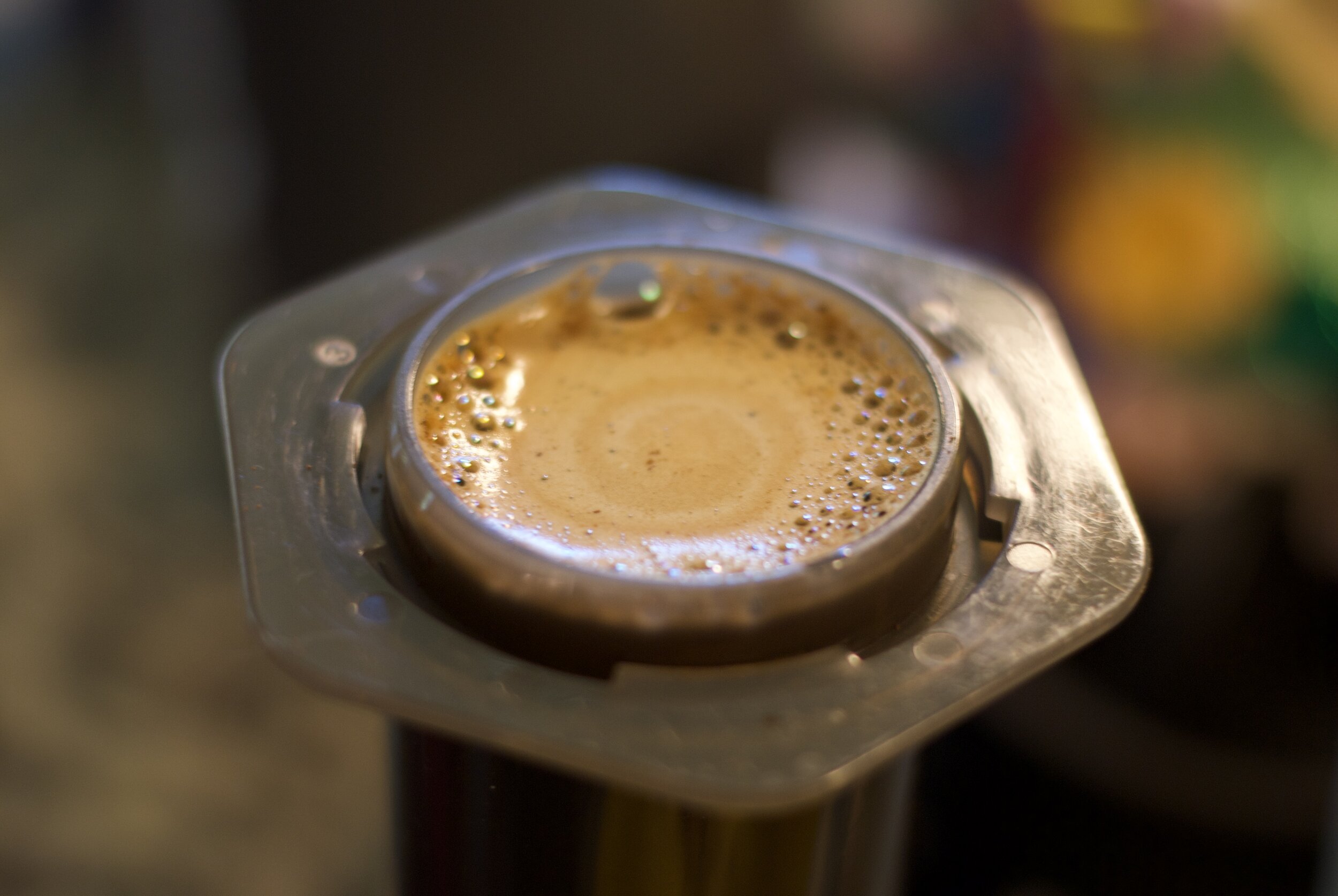Tutorials
“Experiment to discover your optimal brew, then practice to consistently reproduce it. Share this brew with a friend, and you too will have a story to tell about this coffee. This is the Olilu way.”
Welcome! We’re so happy to share the Olilu love with you!
This is how we Aeropress!
Aeropress a la Olilu
We have a soft spot for resourcefulness. When it comes to coffee equipment, we think the Aeropress(R) remains one of the most versatile, inexpensive, and capable brewing options available.
We continually experiment with our full line of coffees, to be in tune with variations that occur from one harvest to the next, and from one growing region to the next. Depending on the coffee being brewed, it may be appropriate to use a higher/lower brew temp, a tighter or coarser grind, or even a higher coffee to water ratio.
That said, this info graphic-tutorial is one starting point for brewing on a regular-size original Aeropress(R). For the smaller capacity Aeropress GO, just remember to adjust the numbers proportionally.
Most importantly, it’s what’s in the cup that matters, so don’t hesitate to experiment until you develop your own recipe that suits your taste. Also, the more you experiment, the quicker you’ll find yourself back in the roast studio for more Olilu Coffee. We’re always excited to roast for you again!
Pour Over / Drip Machine
A standalone manual pourover device like the classic Melitta or the well known Hario V60 all function in the same general way: water from the top onto ground coffee, goes through a paper or metal filter, and out comes the result in the cup underneath. Just like the drip machine.
Where the drip machine falls behind, though, is in brew temperature flexibility, water contact time, and ultimately the ability to optimize your brew.
For a particular coffee’s characteristics and roast level, you’ll get the optimal brew by learning how the coffee reacts to different brew parameters. Start with coarse tuning before worrying about fine tuning your methodology or equipment. Some of these parameters are rather simple and inexpensive. These include:
Coffee grounds size and consistency. The more consistent, the better. The Baratza Encore does a fine job at a reasonable cost. Comes with our Flight of Coffees as well!
Amount of coffee vs. water used to brew (in grams). Use more, use less. Create an objective test with a panel of different coffee to water brew ratios. Pick your favorite based on your taste preference, and stick with it!
Temperature of water. A gooseneck kettle with a temperature gauge allows you to brew above 190. Start by experimenting in the 190 - 205 range for our coffees. Most auto-drip machines lack temperature selection, and brew too cool (~160-175*F) for optimal extraction.
And now, for some fine tuning:
Filter type used - stainless mesh or paper filters. Coffee oils get through metal meshes. Paper filters trap them. Do you like a weighty, heavier feeling cup of coffee? If so, go with a mesh filter. If you like clean and floaty, a paper filter is required.
Contact time of water with grounds. Hand-in-hand with extraction time. Over-extraction results in a dry taste where you’ll feel like you need to constantly lick the roof of your mouth. On the opposite side, under-extraction results in feeling like you just had water flavored coffee: thin, quickly dispersing flavors, no lingering flavors.
Water quality (as it affects taste and solubility). Filter sediment. Filter out chlorines and chloramines (municipal water adds these for safety). A more pure input results in a brew that isn’t fighting for the stage with the tastes of tap water.
Container and cup material and quality. Consider avoiding plastic vessels, cups, and brewing equipment. Have a good cleaning regimen set up to remove built-up coffee stains and oils. These add a stale edge to your brew if not cleaned well.
Your mood. It’s always a great time to brew some fresh Olilu coffee. Do it happily!
Depending on available auxiliary equipment, the majority of auto drip machines cannot brew at a set temperature, or at a rate that optimizes coffee contact time are generally not good for low volume experimental brews. They are not able to fine tune in a single cup or a two cup brew. So have a go at experimenting with your Olilu coffee using the pour over, and contact us if you get stuck, or run into trouble getting your coffee to taste amazing.
After you’ve had some practice, you’ll be banging out consistent pourovers time after time in front of your crowd of friends. You can then tell others to start calling you ‘the machine.’

